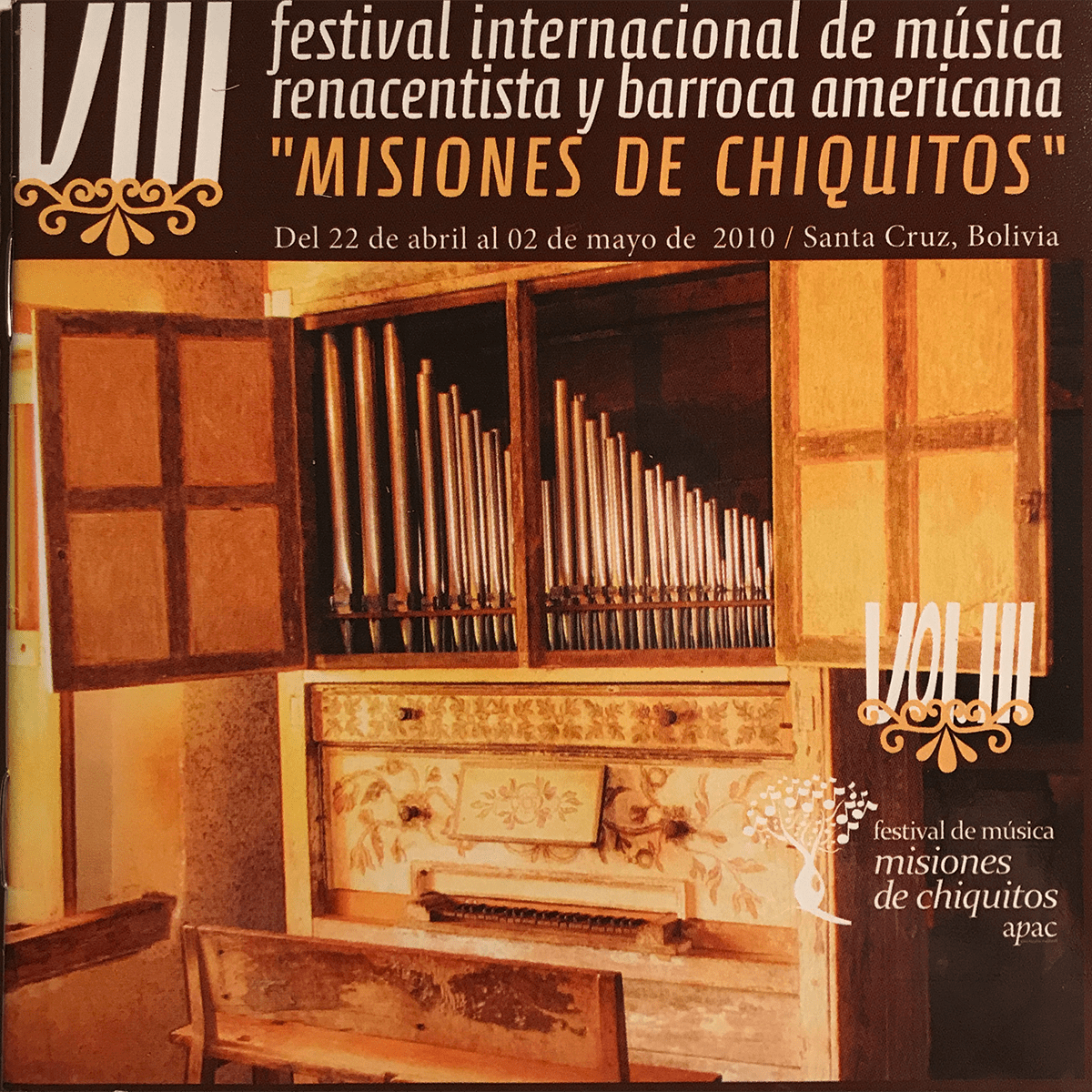CHIQUITOS MISSIONS
VIII FESTIVAL OF RENAISSANCE AND BARROCK MUSIC
LA TEMPESTAD | SILVIA MÁRQUEZ CHULILLA, clave
APAC 2010 VOL. III | GRABACIÓN EN DIRECTO
The old Jesuit missions of Chiquitos in the department of Santa Cruz (1691-1767) and those of Moxos in the department of Beni (1681-1767) constitute one of the main riches of the Bolivian cultural heritage. During the process of restoration of the Jesuit temples of these missions a great musical wealth was discovered: in Chiquitos 5,500 and in Moxos 7,000 sheets of sacred music written between the 17th and 18th centuries, both by European musicians and by the indigenous people of the zone and that was interpreted daily in these towns until the middle of the 19th century.
The Tempest had the opportunity to know all this wealth by participating with other groups in the VII and VIII editions of the Festival, in 2008 and 2010.
CD CONTENT
Johann Sebastian Bach, Suite II en Si menor BWV 1067
01. Overture
02. Rondeau
03. Sarabande
04. Boureé I y II
05. Polonoise
06. Menuett
07. Badinerie
NORDIC BRASS ENSEMBLE
Antonio de Cabezón
08. Diferencias sobre el canto Madama le demanda
Anónimo
09. Santa Curuzu
LA TEMPESTAD
Johan Christoph Friedrich Bach, Sonata en trío en Mi menor HW 7
10. Allegro Spiritoso
11. Andante
12. Allegretto
MUSICA FIORITA & CORO ARAKAENDAR
Giovanni Battista Bassani, Missa II Mo Domingo
13. Kyrie
14. Gloria
Johann Schop
15. Pavane lacrimae
SYNTAGMA MUSICUM
Cancionero Chilidugú o la evangelización jesuita en las tierras mapuche
16. Quiñe Dios
Juan Capistrano Coley, Divertimento 8
17. Andante molto
18. Allegro
VIOLETA CLUB
Anónimo
19. Ave Maria
BACK COVER
ABOUT CHIQUITOS MISSIONS (BOLIVIA)
The old Jesuit missions of Chiquitos in the department of Santa Cruz (1691-1767) and those of Moxos in the department of Beni (1681-1767) constitute one of the main riches of the Bolivian regional and national cultural heritage. During the process of restoration of the Jesuit temples of these missions a great musical wealth was discovered: in Chiquitos 5,500 and in Moxos 7,000 sheets of sacred music written between the 17th and 18th centuries, both by European musicians and by the indigenous people of the zone and that was interpreted daily in these towns until the middle of the 19th century.
To this treasure is added the declaration of UNESCO in 1990 that named six villages of Chiquitos as Cultural Heritage of Humanity as “living towns”, since unlike other ancient Jesuit villages that only remain ruins, in Chiquitos they are still preserved its beautiful churches, musical scores, customs, clothing, parties, ceremonies, instrument manufacturing and many of them the musical tradition. These towns are San Xavier (240 km away from Santa Cruz de la Sierra), Concepción (290 km), Santa Ana (520 km), San Rafael (550 km), San Miguel (515 km) and San José de Chiquitos (280 km), but in addition there are the other missions although they have not been included in the declaration by UNESCO are part of this circuit and equally of extraordinary attraction; These missions are: San Ignacio de Velasco (460 km), Santiago de Chiquitos (420 km) and Santo Corazón (640 km).
The Festival created in 1996 by the Association Pro Art and Culture took place in three venues: Santa Cruz de la Sierra, Concepción and San Xavier. Today it reaches other villages (more than three thousand kilometers) that were former Jesuit missions from other regions of the Department of Santa Cruz and Beni, as well as Franciscan and Mercedarian missions from the territory of Santa Cruz. This project is unique because it revolves around this lively and dynamic cultural heritage of its peoples that keep their traditions in force.
For musicians it is like going back in history, a magical moment due to the historical-cultural connotations. Many times music arranged or created by the indigenous people of the place is interpreted, so cultural identification plays a fundamental role.
Those first missionaries could never imagine the way in which the Chiquitan peoples would appropriate those instruments and music they carried from Europe, incorporating them and adapting them to their own culture. To the end that four centuries later it can be said that Chiquitania (or Chiquitanía: it is accentuated in both ways) is one of the most melómana regions of the world, where Baroque music is still as alive and current as in the eighteenth century, nuanced and colored with local flavor by some communities whose idiosyncrasy reconciles, in an admirable way, the traditional and the modern, the artistic and the practical, the Spanish and the aboriginal language.
Mario Vargas Llosa (El País, 09/02/2014)
Full article by Mario Vargas Llosa for El País:

